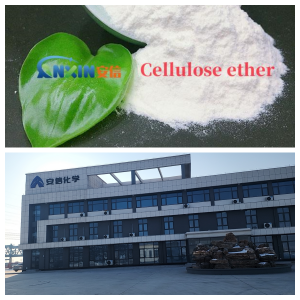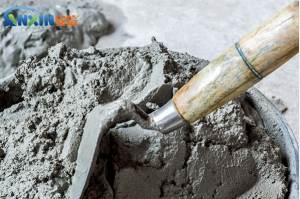Dry-mix mortar is a finished powder made by dry-mixing cementitious materials, aggregates, fillers, and various functional additives in appropriate proportions in a factory. During construction, it can be used simply by adding water and stirring. To meet varying construction performance and durability requirements, dry-mix mortar often requires the addition of multiple additives, of which cellulose ethers are one of the most important organic polymer additives.
1. Classification of Common Additives for Dry-mix Mortar
1.1. Water-Retention Thickeners
Common examples include hydroxypropyl methylcellulose (HPMC), hydroxyethyl methylcellulose (HEMC), and hydroxyethyl cellulose (HEC).
Main Functions: Improve mortar water retention, prevent bleeding, extend open time, and improve consistency and thixotropy during construction.
1.2. Retarders and Accelerators
Retarders (such as citric acid and tartaric acid) delay setting and are suitable for high-temperature construction or large-scale applications. Accelerators (such as chloride salts and aluminum salts) accelerate setting and hardening at low temperatures.
1.3. Air-Entraining Agents
Commonly used are lignin sulfonates and alkyl sulfonates. They improve mortar workability, frost resistance, and application fluidity by introducing fine bubbles.
1.4. Water-Reducing Agents
Mainly naphthalene-based and polycarboxylic acid-based agents, they reduce water consumption and improve mortar strength and density.
1.5. Redispersible Polymer Powder (RDP)
Enhances mortar flexibility, adhesion, and crack resistance. Commonly used in tile adhesives, exterior wall insulation systems, and repair mortars.
1.6. Other Functional Additives
Includes mildew inhibitors, water repellents, hydrophobic powders, and thickening starch ethers. These additives are selected based on the intended use of the mortar.
2. Mechanism of Action of Cellulose Ethers in Dry-Mix Mortars
Cellulose ethers are a class of water-soluble nonionic polymers widely used in various dry-mix mortar systems. Its main mechanisms of action include:
2.1. Water Retention
Cellulose ether molecules absorb and lock in mixed water, slowing its loss to the substrate and air, ensuring sufficient hydration time for the cementitious material, thereby improving mortar strength.
2.2. Thickening and Rheology Control
Cellulose ethers form a viscous solution in water, improving the wet consistency and adhesion of the mortar, making it less prone to slippage (sag resistance) during application on vertical surfaces. Furthermore, high-quality cellulose ethers exhibit excellent thixotropy, facilitating smoothing and calendering.
2.3. Improved Workability
The synergistic effect of water retention and rheological properties ensures a longer workable time and a smooth feel for the mortar, reducing fatigue during application.
2.4. Improved Stability
Reducing segregation and bleeding of aggregates and cementitious materials improves mortar uniformity and construction quality stability.
3. Application of Cellulose Ethers in Different Dry-Mix Mortars
3.1. Masonry Mortar and Plaster Mortar
High water retention and good workability are required. Cellulose ethers can reduce hollowing and cracking, and improve adhesion.
3.2. Tile Adhesive
Excellent anti-sagging properties and a long open time are required. Cellulose ethers ensure that tiles do not slide after application and allow sufficient adjustment time.
3.3. Self-Leveling Mortar
High fluidity and stability are required. Choose a cellulose ether with low viscosity and high water retention to avoid bleeding and segregation.
3.4. External Insulation System (EIFS) Mortar
Water retention directly affects the adhesion between the insulation board and the mortar. Cellulose ethers can ensure consistent quality during large-scale application.
4. Selection and Addition Considerations
Viscosity Selection: High viscosity offers strong water retention but may reduce workability; low viscosity offers good fluidity but is prone to bleeding. Adjustments should be made based on the specific formulation. Addition amount: Typically 0.1% to 0.5% of the cementitious material’s mass. Excessive addition may affect strength and drying time.
Dispersibility: Thorough dispersion is required during the dry-mixing stage to prevent clumping after water addition.
Improving the performance of dry-mix mortar requires a sound additive system, and cellulose ether is a core modifier within this system. It not only ensures the mortar’s water retention and workability, but also indirectly influences bond strength, durability, and surface quality. With increasing construction requirements and the widespread adoption of energy-saving and environmentally friendly concepts, the application of cellulose ether in dry-mix mortar will become more diverse and refined.
Post time: Aug-15-2025

